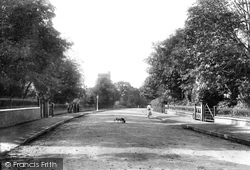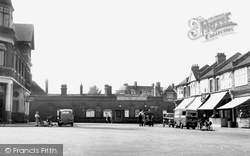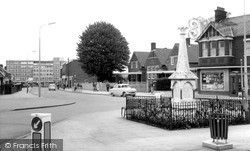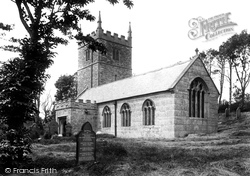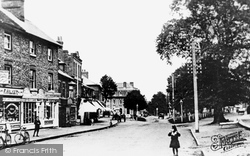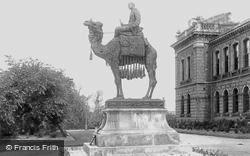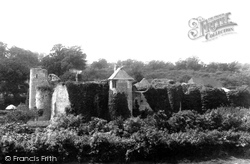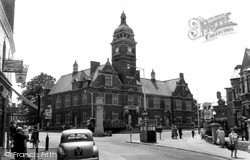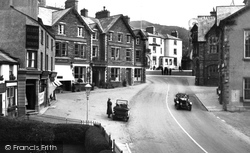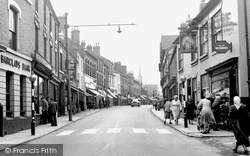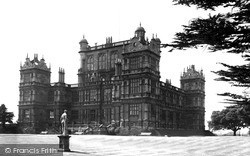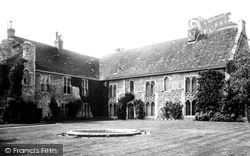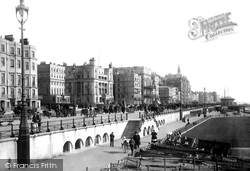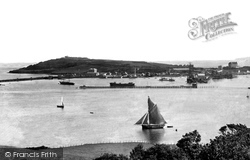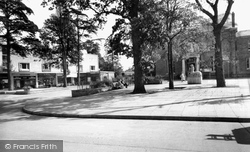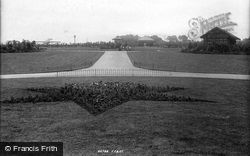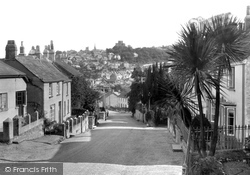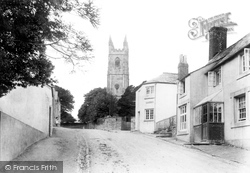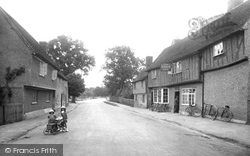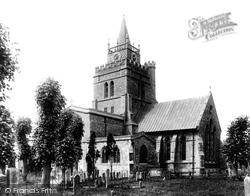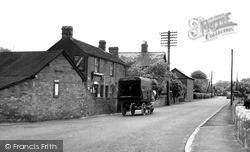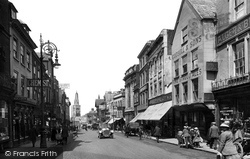Places
18 places found.
Those places high-lighted have photos. All locations may have maps, books and memories.
- Hythe, Kent
- Hythe, Hampshire
- Small Hythe, Kent
- Bablock Hythe, Oxfordshire
- Methwold Hythe, Norfolk
- Hythe, Somerset
- Hythe, Surrey
- Hythe End, Berkshire
- The Hythe, Essex
- Egham Hythe, Surrey
- West Hythe, Kent
- New Hythe, Kent
- Broad Street, Kent (near Hythe)
- Horn Street, Kent (near Hythe)
- Newbarn, Kent (near Hythe)
- Newington, Kent (near Hythe)
- Broad Street, Kent (near Hythe)
- Stone Hill, Kent (near Hythe)
Photos
360 photos found. Showing results 3,461 to 360.
Maps
101 maps found.
Books
10 books found. Showing results 4,153 to 10.
Memories
4,406 memories found. Showing results 1,731 to 1,740.
Brenda Stevens
In 1938 my dad was a farm labourer in Wooburn common. He had a row with the farmer and got the sack, we moved down to Wooburn Green in a little cottage by the side of Pedleys yard.. They ran the post office.. We were 5 children , 4 ...Read more
A memory of Wooburn Green by
Evacuee To Bedford 1939
I was evacuated to Bedford in 1939 aged 7 and stayed first of all with a Mrs Drake ,the wife of a captain Drake who was in command of a ship called the Warspite. I remember it was off Goldington rd. by the school where all the ...Read more
A memory of Bedford by
The Shops In Green Lane In 1960.
Starting at Eastbury Road, turn right into Green Lane by the Colliver Fisher car showroom and down the hill past the Blue Bird cafe, Barclays Bank, Martins newsagent, Rawlinsons the stationer, cross the road to the Post ...Read more
A memory of Northwood by
Memories Of Lawmuir Agricultural College Jackton
Hello ,just found this interesting website about lawmuir agricultural college which brought back many happy memories. I was a pupil there in 1954/55. Previously I attended Albert senior secondary school ...Read more
A memory of Eaglesham by
Widford During The Early 50s.
Before the days of Widford Industrial Estate we would walk from Writtle Road to Widford Church. My sister and friends would make rush mats for us to sit on by the river. Hawthorn hedges lined the lane, ...Read more
A memory of Widford by
The Temporary Chapel, Bede College Durham
This photograph of 1929 is of special interest to me because of the long, white building in the top left-hand corner of the image. This was the temporary chapel at the College and served in that capacity from ...Read more
A memory of Durham by
Childhood Memories
These memories have been contributed by Myra Greer. In 1947, when I was 7, my mother and I moved from Salisbury in Wiltshire where my father was stationed at RAF Boscombe Down, to near Llanfarian, where my grandparents had ...Read more
A memory of Llanfarian in 1947
Tottenham Earlsmead School
I lived in Colsterworth Road,Tottenham between 1948-58 and went to Earlsmead School. So many memories; Palace, Bruce Grove and Florida cinemas where we saw Snow White, sat in the circle and it really scared me! The lovely ...Read more
A memory of Edmonton in 1956 by
Suncliff Holiday Camp
Myself and two friends visited Totland Bay in 1969 and stayed at the Suncliff Holiday Camp. It was very basic there and I remember the owner cooked us our meals. I remember watching the moon landing on an old tv that they ...Read more
A memory of Totland Bay in 1969 by
Brentford 1961 Part One
In 1961 I started work at Heathrow, and within three weeks was transferred to the new Turriff Building on the Great West Road. The canteen was on the tenth floor. Imagine having a subsidised lunch and looking out over ...Read more
A memory of Brentford in 1961 by
Captions
4,899 captions found. Showing results 4,153 to 4,176.
The next four photographs show the well-to-do suburb of Benhilton - served by the church of All Saints, built in 1865.
One stop down the line from Enfield town, Bush Hill Park station was opened in 1880 to service this development by the Northern Estates Company.
The part that developers have played in the growth of the Luton conurbation is epitomised by the building in the far distance.
St Julitta's was restored in 1871-72 after the ruined church was drawn and planned by the author Thomas Hardy.
The imposing building (centre left) which juts out at the crossroads of Church Street and Claremont Lane ahead, is now occupied by the National Westminster Bank.
The adjacent Royal Engineers Museum contains many Gordon relics, including the folding chair he used at Khartoum, and a yellow jacket given to him by the Emperor of China.
Further alterations were made by the Wyatt family when it came into their possession in 1493, and Sir Thomas Wyatt, the father of the English sonnet, was born here in 1503.
On the wide pavement, centre right, we can see the small office which was used by the bus inspectors.
The board by the entrance to the Queen's building is offering 'luncheons, teas and garage'. Apart from losing its 'coaches' sign and acquiring a garage, the Salutation is little changed.
To the left of the car, by the white painted building, is the entrance to Victoria Street, where in No 8a D H Lawrence was born on 11 September 1885.
It was sold by the 10th Lord Middleton, still a Willoughby, to the City of Nottingham in 1924.
The abbey stands on the site of a Saxon nunnery set up by Domneva, and run by St Augustine's monks from Canterbury; it was destroyed in the ninth century by the invading Danes.
The 1860s ones on the left survive, but the next block with its elegant Ionic columns has been replaced by the modern Hilton West Pier Hotel.
Further alterations were made by the Wyatt family when it came into their possession in 1493, and Sir Thomas Wyatt, the father of the English sonnet, was born here in 1503.
A shipyard developed here from 1860, and by the late 19th century there were breakwaters, repair facilities and two dry docks of 350ft and 537ft.
The sculpture in front of Moot House was one of the first to be given to the town by the Harlow Art Trust. Called 'Chiron', it was bought to commemorate the coronation of Queen Elizabeth II.
The design for this park cleverly concealed a mineral railway line, which crossed the park from Bank Hall Colliery (owned by the Thursbys) to join the mineral tramway, which served Rowley Colliery.
Now on the B3254 to Bude, St Stephens Hill was one of the roads administered by the Turnpike Trust, who set the tolls.
The Toll House at St Stephens was built in 1761 by the Launceston Turnpike Trust, which had come into being the previous year with the intention of 'widening and keeping in repair several roads leading
Now on the B3254 to Bude, St Stephens Hill was one of the roads administered by the Turnpike Trust, who set the tolls.
Most of the village was owned by the Whitbread family, including these rows of 16th-century timber-framed cottages.
The large parish church is mostly 13th- century, but it was heavily restored by the great architect Sir George Gilbert Scott, a native of Buckinghamshire, between 1849 and 1869.
The slate-roofed house by the telegraph pole survives, but nothing else is the same on the left side of the road.
The street lighting by the chemist was a new innovation, only introduced in 1900 after the generating station opened in Commercial Road.
Places (18)
Photos (360)
Memories (4406)
Books (10)
Maps (101)





